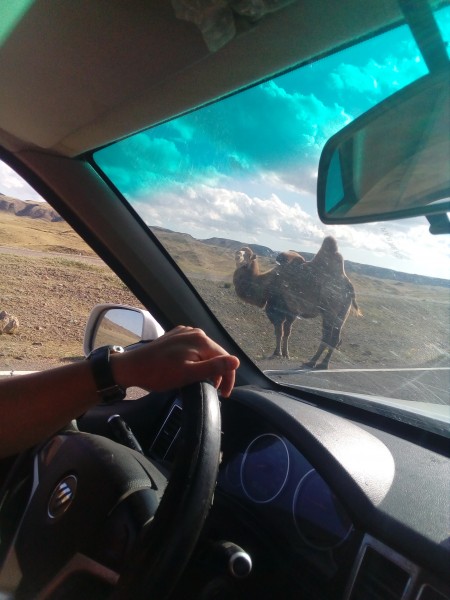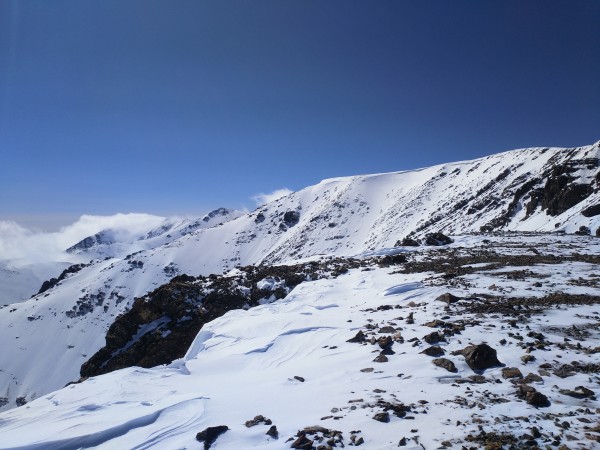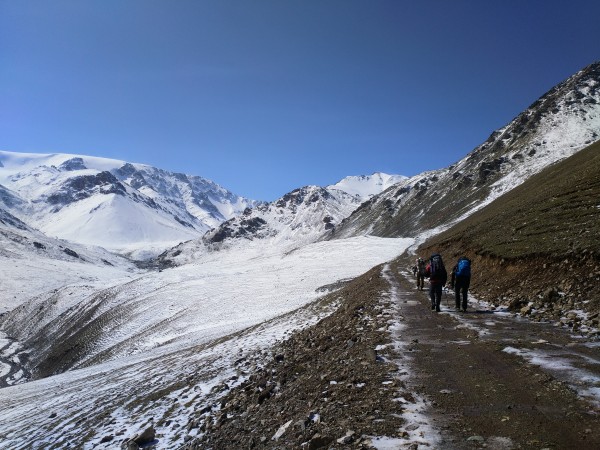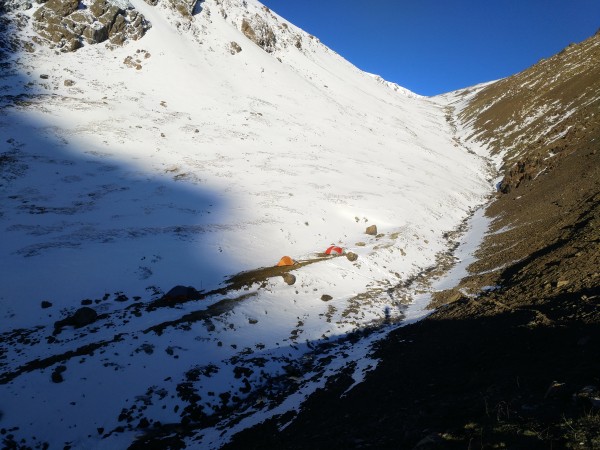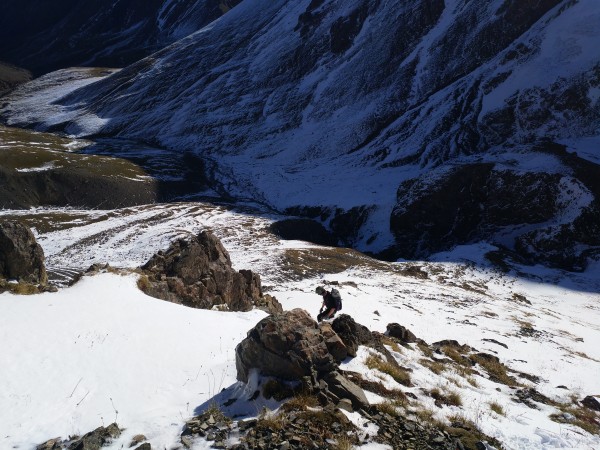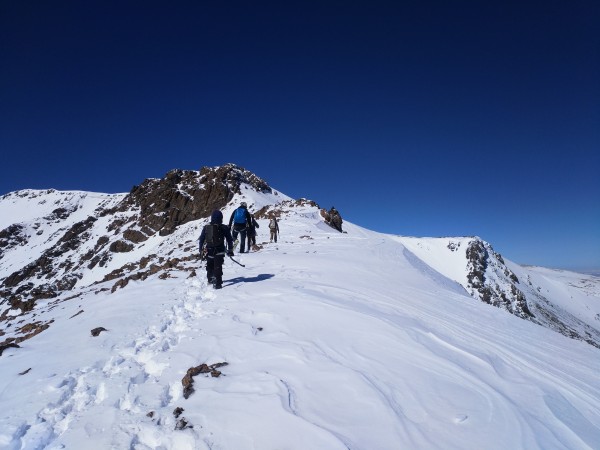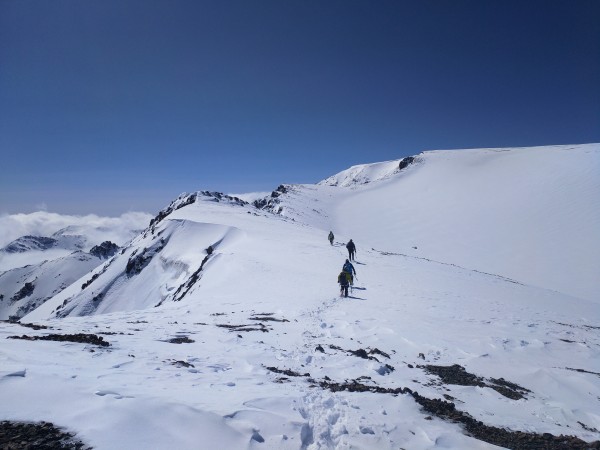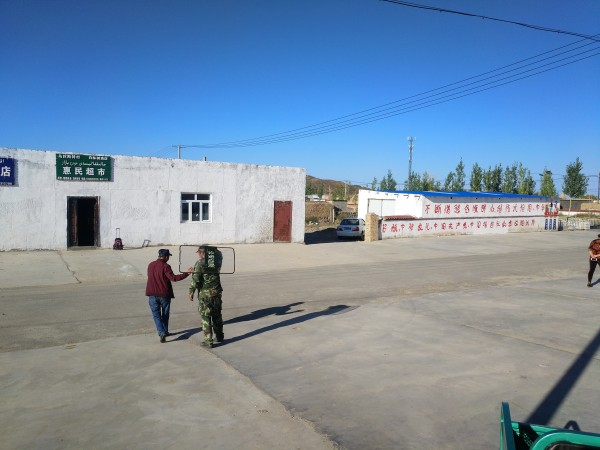Firstly, we found out about the name; the actual peak is called Muz Tau, the Kazakh work for Ice Mountain. The Tuvans to the south don’t have a name for it, the Chinese also use Muz tau. The name Sauyr Zhotasy bemused locals as a disjointed amalgamation of Sauyr which is the old name for the now Jeminay area, which includes the name of the range, and (z)hotasy which is an unremarkable town on the northern side. No one we met recognized Sauyr Zhotasy as its name, including the Xinjiang Mountaineering Association representative.
Anyway…
Approached over 4 days, including time sitting out rain and snow, we arrived at the foot of the north ridge. Much more dramatic than the south facing side, the north side retains snow year round and is several kms beyond the last established human camps – other than the military posts high over the ridge on the border. Temporary ger sites dot the flood plain, but otherwise theres not enough pasture to lure the Kazakh goat herders, most of whom are now collected into cookie cutter villages for much of the year.
Steep and exposed, the North buttress route has snow to about 60o and 2 pitches of easy mixed alpine thru the buttress. Rock quality was splintered and friable cracks. Ridges were beginning to cornice in early September and it wouldn’t be much longer till snow dangerously loaded the faces. It appeared wed hit a sweet spot right when the season turned and the first snows bonded well to the rock, further shrink wrapped on by the still-warm sun.
Much of the climbing was linking steep sections of snow along the shadow line of a fin of rock, exposed but safe. Beyond that a stepped up ridgeline lead to the buttress where we left 2 ropes fixed for the descent.
Overall nothing too taxing, but the buzz of route finding thru completely undocumented terrain added an adventurous edge.
Afternoon clouds began building to the south, a weather pattern wed not seen over the prior week. Unsure and unwilling to see if they would blanket the peak, we retreated about 100m below the summit at 3740m and about 1.5km away as it lies well beyond a series of false summits. With no useful weather records on the range and 4 days from the car, we kept a conservative margin after experiencing the afternoon deluges on the approach.
Descent was a simple matter of retracing out steps, down thru the buttress.
So the first official ascent still awaits. After seeing the approach from the low angle ice fields and ridges to the north its hard to see how its not been climbed – tho these approached are well off limits to anyone not with the Chinese border guards. That said there are far more stimulating routes than simply wandering up a glacier and the entire range has dozens of +/- 900m alpine faces, including beguiling glacial snouts, that would be good autumn climbing.
